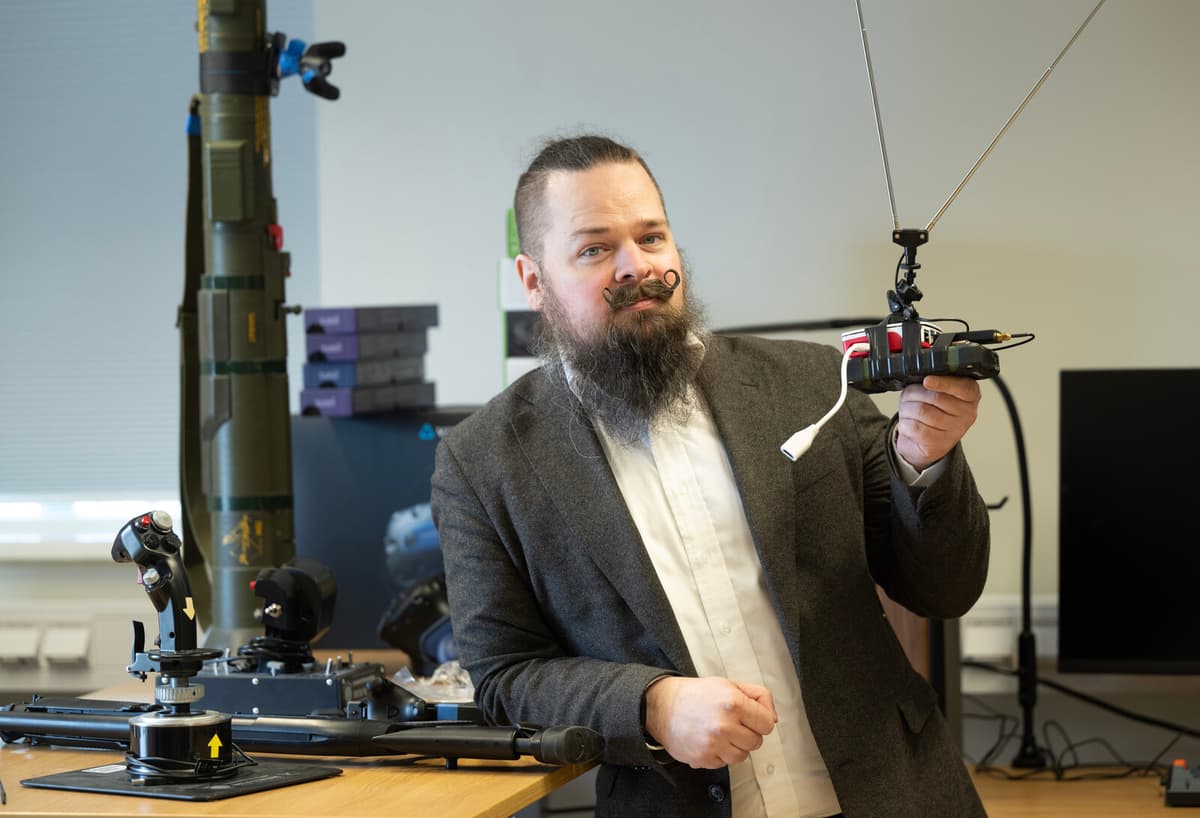He doesn't look like MacGyver. He doesn't move like MacGyver. But when Marcus Tynnhammar talks, he sounds a bit like MacGyver. The fictional American TV hero from the 1980s and the head of the experiment office at the air staff outside Uppsala solves both tricky situations with existing objects, often with inventiveness as the primary weapon.
Some of the things we're testing are taking old gadgets we have in storage and then testing to tape them together and see what works, says Tynnhammar.
His department is currently under construction. The hope is for more employees in the near future and to be able to run "reasonably full speed" after the summer. The experiment office is to shorten lead times for things that the Swedish Armed Forces need to develop. But also to simplify contact between different branches of the military and cooperation with the civilian business community.
The Swedish Armed Forces' lead times are twelve years to buy in things if you're lucky. While the lead times we're after and that companies want are to develop quickly and have things in place within one or two years.
"Screw and nut"
Right now, the pace is "a couple of projects a week". It can be anything from testing possible AI solutions to taking existing gadgets and modifying them so they can be used in a new way.
The span right now is everything from screw and nut to discussing how we could use different IT solutions in space.
That the Swedish Armed Forces "come up with new weapons" has been true for centuries, but the recent combination of technological advancements and war in the nearby region has given it a new pace.
I think what Russia's war in Ukraine has contributed with is that more people feel a sense of urgency, says Tynnhammar.
Increased appropriations
Recently, the government presented investments in the Swedish defense in the order of 300 billion kronor – the largest military buildup since the Cold War. Increased appropriations provide more room for innovation, admits Tynnhammar:
It's never been said "you can't do that because it costs money", on the contrary. But at the same time, I'm a Smålander at heart, we can do a lot without it costing anything. But it's nice to know that I can come up with really wild ideas.
Three-step rocket
Tynnhammar describes the overall ambition as Sweden and the Swedish Armed Forces once again becoming innovation-driven like a three-step rocket:
The first step is what we've done before. To sit and wait for a good gadget to come along and then buy it.
Step two is what we're doing now, to reach a level of development on par with what's happening in the world together with civilian companies.
Step three is to get back to how it used to be. For companies to come to us and wonder what we've developed that they can use.
Swedishness
Even if Sweden is not currently on step three according to Tynnhammar's classification, he believes there are good, unique, prerequisites to get there.
There are two things that Sweden has always been very good at. One is the latest technologies and the other is cooperation. Other countries can be skilled in technologies, he says and continues:
But the ability to cooperate is something that is so deeply rooted in Sweden that it's hard for anyone else to catch up with us there. We can sit in the same room even if we're not in agreement. We can even be direct competitors as companies, but we can still do something together.
The experiment office at the air staff in Uppsala is not the only department within the Swedish defense that deals with innovation and has come up with "inventions" recently.
Earlier this year, Loke, a weapon system for countering drones, was demonstrated, developed by the Swedish Armed Forces, the defense industry, and the Defence Materiel Administration.
In March, the torpedo 47 was test-fired, installed on a combat boat 90, a smaller vessel than what it was originally developed for. The work on the modification was a collaboration between the Defence Materiel Administration, the Swedish Armed Forces, and Saab.





